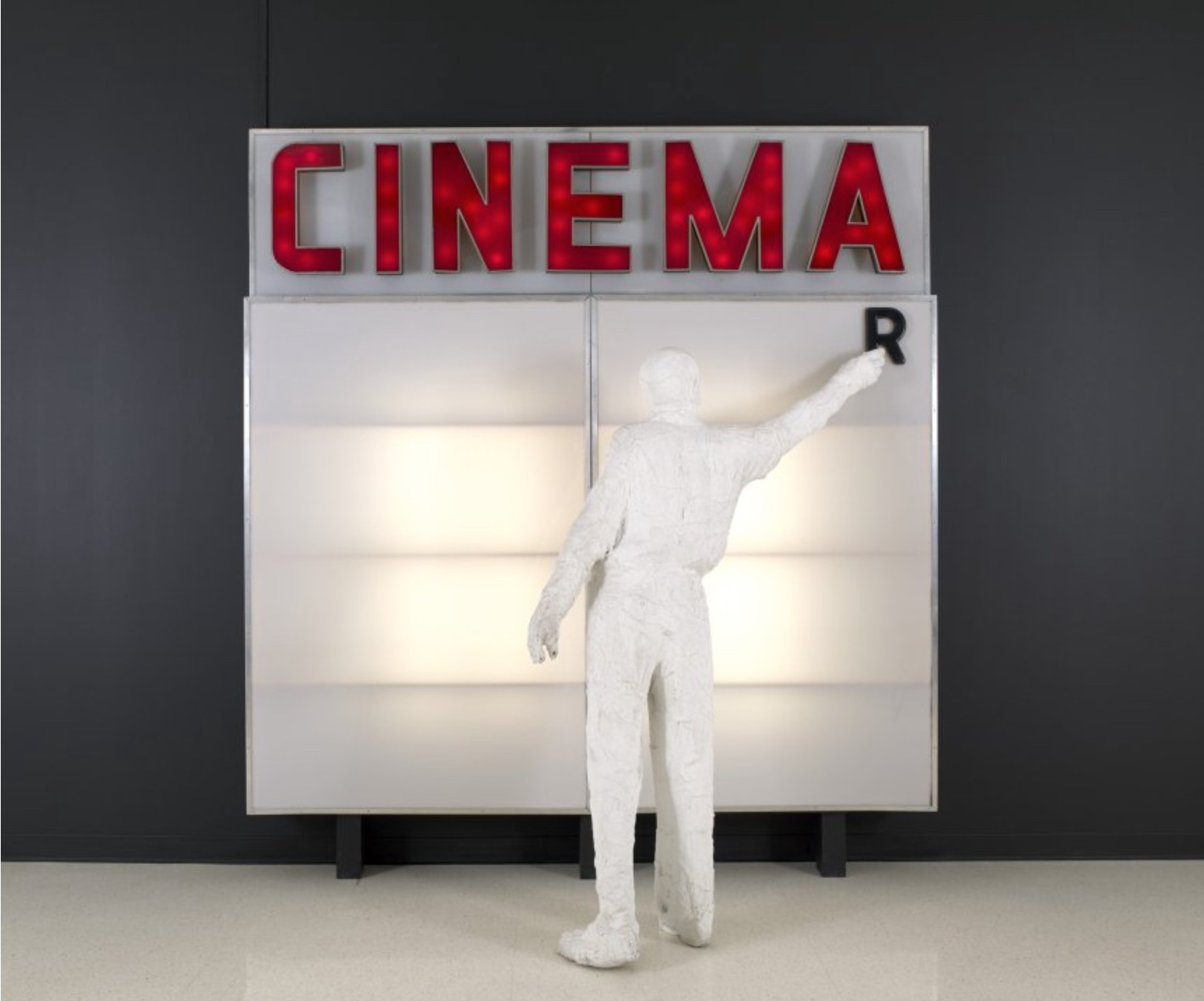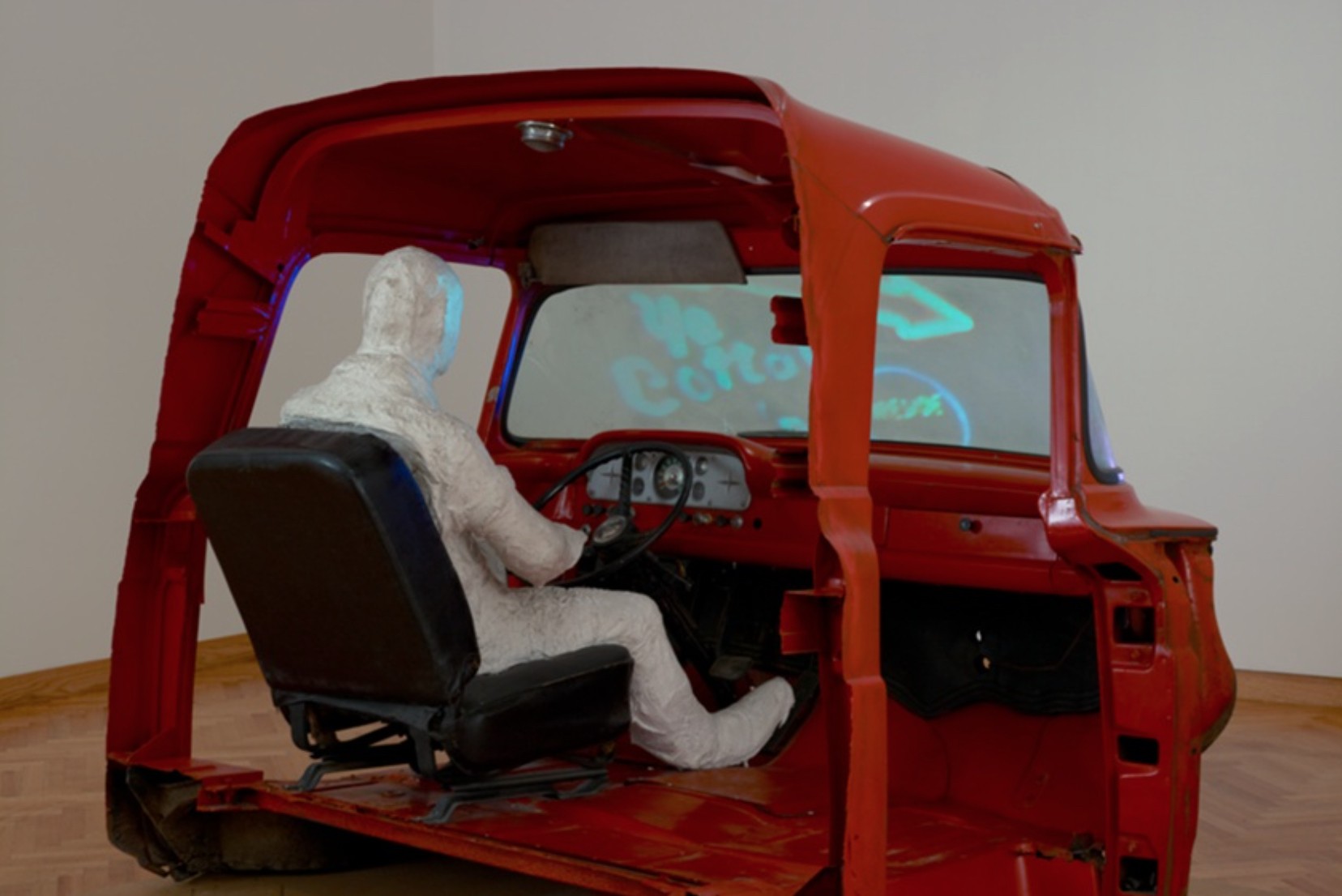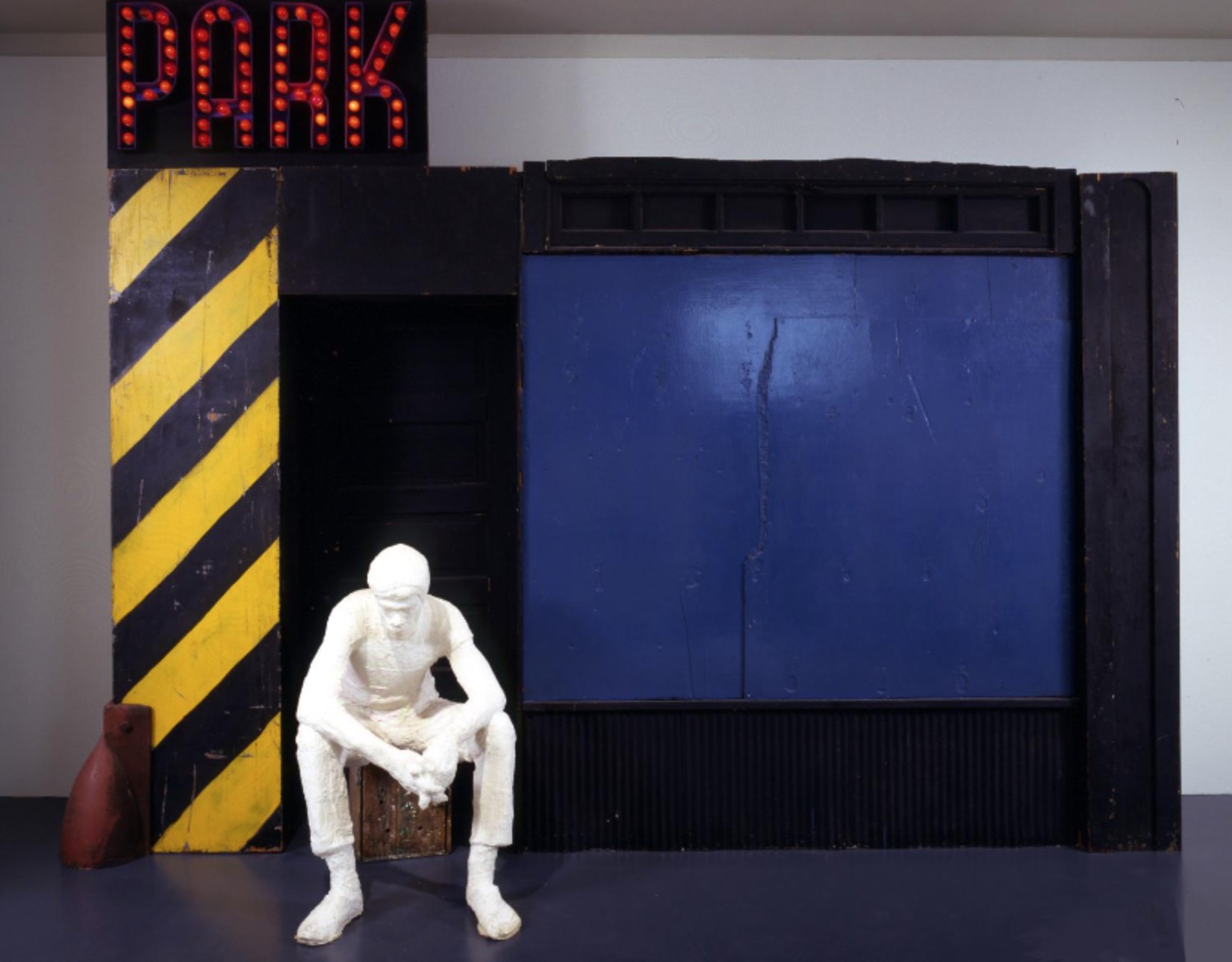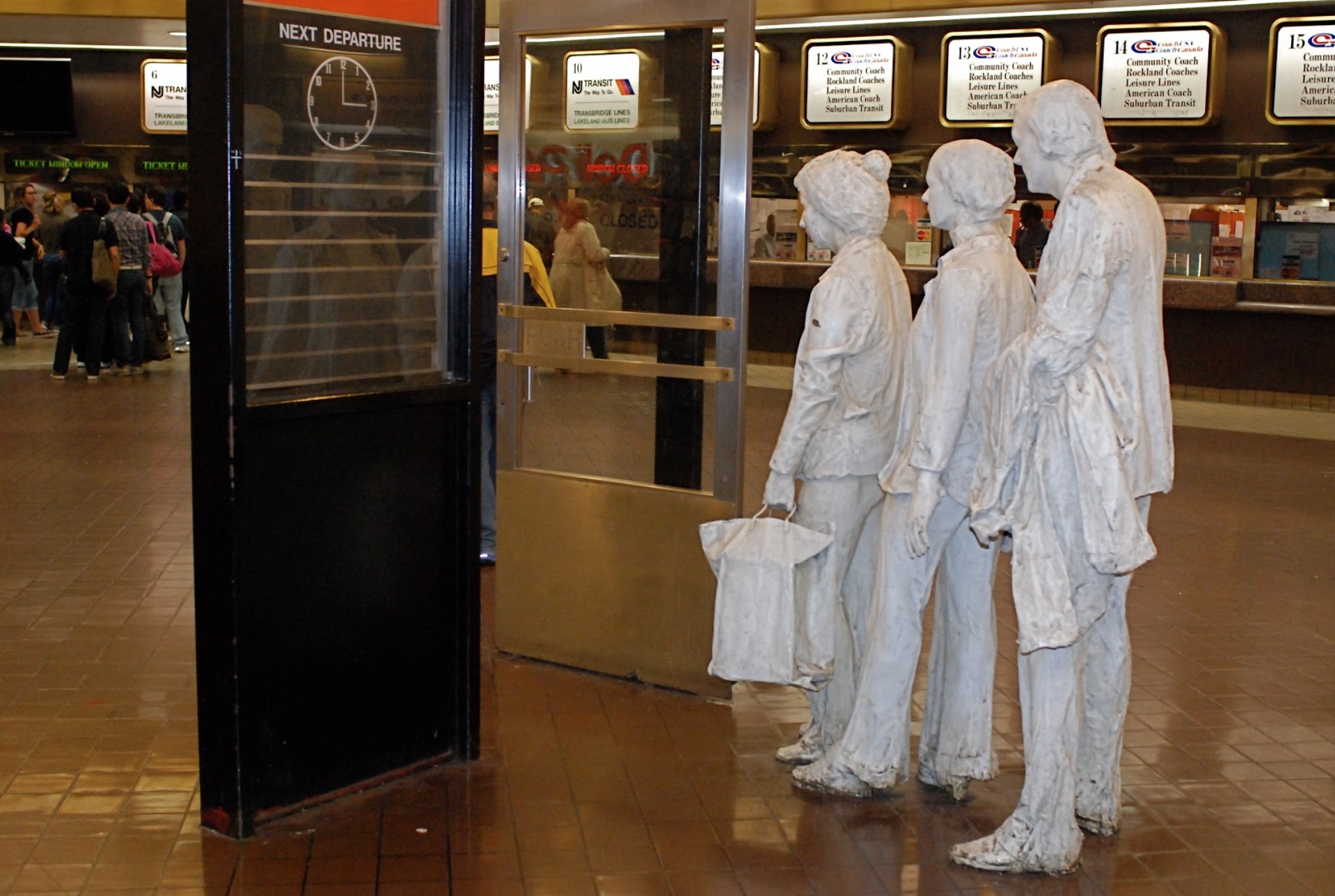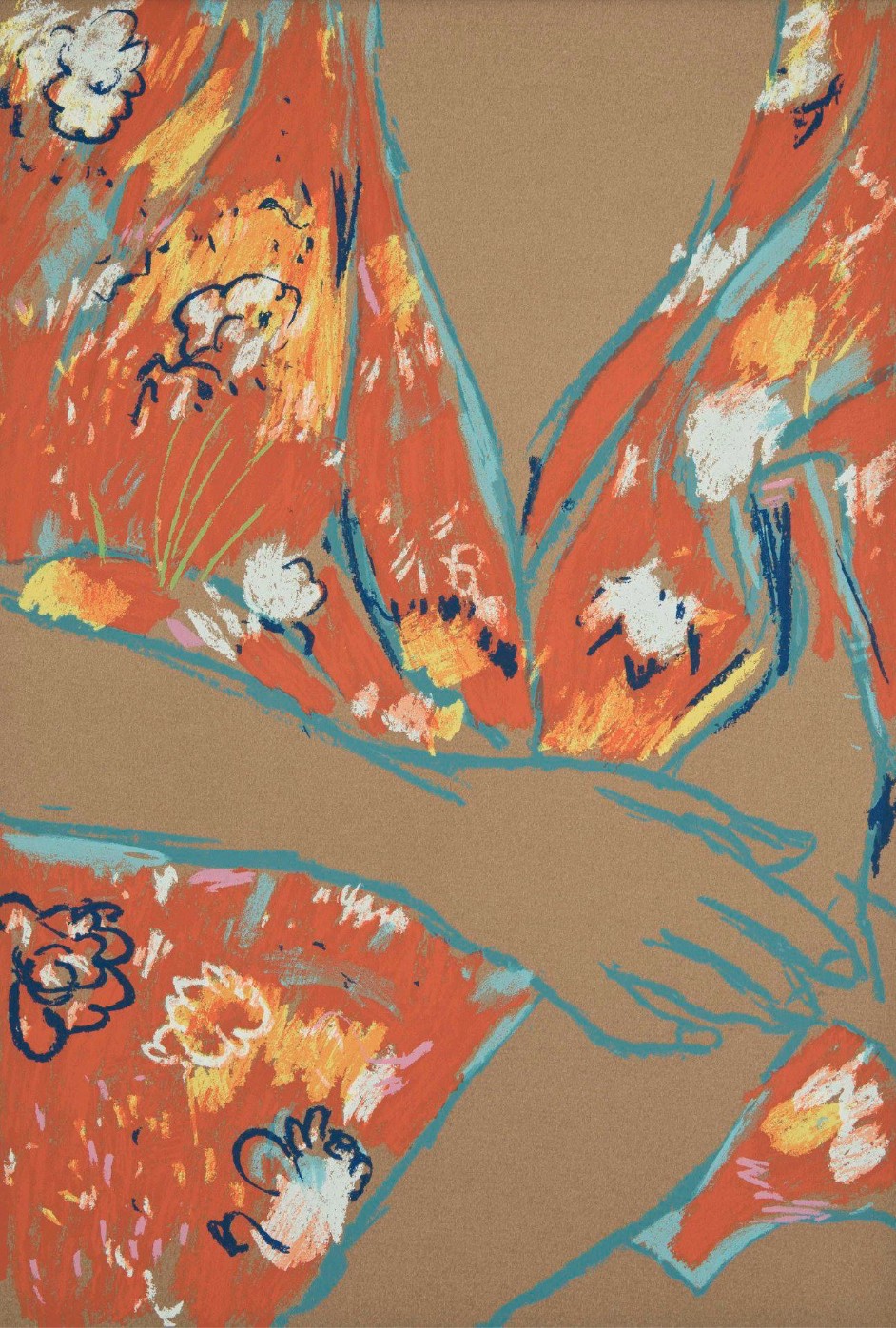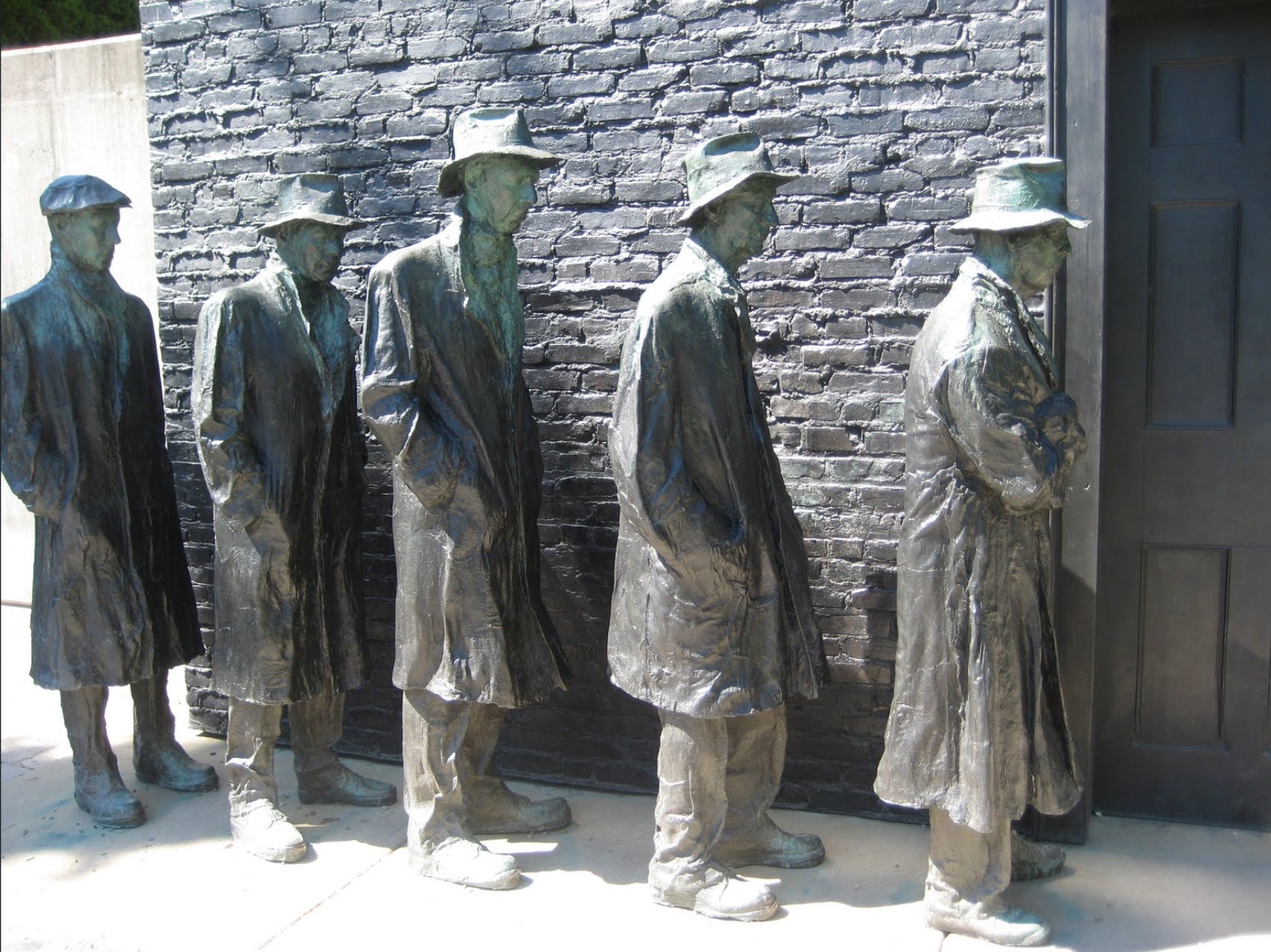George Segal Centennial
By Laura Heyrman
This week we’re celebrating the centennial of George Segal’s birth (American, 1924-2000). Best known for his innovative sculptures, the artist was born in New York City to Jewish immigrants from Eastern Europe. The Segals relocated to New Jersey where they owned a poultry farm and the artist grew up helping with the work there. Segal purchased his own chicken farm in South Brunswick, New Jersey after marrying. The artist lived on that farm until his death.
Having discovered an affinity for art in high school, Segal went on to study art and education at the Pratt Institute, Cooper Union, and New York University, from which he graduated in 1949. The artist sometimes taught Art and English at the local high school and at Rutgers University to make ends meet. During his years studying in New York, Segal had mingled with the city’s avant garde; many members of this group became long-time friends. The most important of these were the composer John Cage (American, 1912-1992) and artist Allan Kaprow (American, 1927-2006). Segal and Kaprow participated in Cage’s experimental music composition classes and Kaprow developed some of his ideas about performance art and Happenings at Segal’s annual picnics held at the South Brunswick farm. In fact, the term Happening was coined at a performance there during the Spring of 1957. For Kaprow, a Happening was "A game, an adventure, a number of activities engaged in by participants for the sake of playing." This idea has links to the Dada movement of the early 20th century but the concept of creating an art experience out of the everyday world was an important innovation of the mid-20th century. For Kaprow, such an experience should be impermanent and not reproducible, while Segal transformed it into a basis for sculpture, permanent but also creating the kind of interactive experience that Kaprow sought.
In his early years as an artist, Segal worked as a painter and throughout his career he created paintings and prints such as the aquatint Woman in a Red Kimono (1985) in the slide show. In 1958, the artist began to experiment with plaster sculpture and exhibited several at a one-man show in 1960. The following year Segal acquired a box of plaster-coated bandages, used at the time to create orthopedic casts; the materials were given to the artist by as student in one of his adult education classes. Segal immediately began experimenting using the plaster bandages to create life casts, a development which led to the artist’s invention of his distinctive sculptural approach, life-sized casts combined with the materials of everyday life.
"For me to decide to make a cast of a human being broke all the rules of fine art." – George Segal
Segal’s technique involved wrapping sections of his models, usually friends and family members, in the bandages. These were removed when dry and attached with additional plaster to create a hollow figure. Originally the artist left the casts white, as seen below in Cinema (1963) and The Truck (1966). Later casts might be painted, in primary colors or to imitate the appearance of bronze sculptures. In the portrait photograph included in the slide show, a blue-painted cast is seen behind the artist. As his work became better known, Segal began creating outdoor compositions which required a more permanent medium. The solution was to cast the figures in bronze; sometimes these were painted white to resemble his earlier sculptures. An example included here is Gay Liberation, first cast in 1980 and incorporated into Stonewall National Monument since 1992.
Segal’s casts are only one portion of his sculptures; the figures are set into real world environments created using objects found by the artist in junkyards, around the farm, and other venues. Though the figures have individualized characteristics, when seen in person one feels that the monochromatic figures are stand-ins for the viewer, or perhaps a stranger acting within the environment. The Truck (1966) is a particularly important example from early in Segal’s use of his unique approach. The plaster figure sits in the cab of a red pickup truck found by the artist in a junkyard. The artist installed a machine which projects a film loop of streets, buildings, and neon lights onto the windshield, as if this is the driver’s view as the truck travels the city. A sculpture like this, incorporating found objects, artist-made elements, even audiovisuals, would not be revolutionary if made today when they are known as sculptural environments or installations. In 1966, it was a tradition-shattering innovation. The sculpture appeared in the "Sixty-Eighth American Exhibition" (1966) at the Art Institute of Chicago where it was a sensation. Martin Friedman, then the director of the Walker Art Center in Minneapolis, said “I found it very moving. Actually … by treating the man almost as a ghost, as a calcified figure, Segal presents you with reality, then questions the existence of reality.”
Segal is usually associated with the Pop Art movement because he incorporates objects of everyday life into his sculptures, but unlike many Pop artists, he focuses on the human consumer rather than the popular culture being consumed. The artist himself stressed the importance of his subject matter, wanting to explore the places and things with which he was familiar. Segal’s sculptures are appealing to many because viewers are also familiar with his subjects. His works invite the viewer in, often quite literally; public bench sculptures like Gay Liberation allow the viewer to become part of the work by sitting down right next to the sculpted figures. Segal’s approach to creating a sculptural environment altered what was possible in sculpture by breaking the boundary between art and life, establishing him as one of the most important sculptors of the later 20th century.
“George Segal: Themes and Variations” at the Zimmerli Art Museum, Rutgers University, 71 Hamilton St., New Brunswick, New Jersey, continues until July 31, 2024. zimmerli.rutgers.edu/art/exhibition/george-segal-themes-and-variations
Please share your comments and questions on Substack at: irequireart.substack.com/p/viewing-room-23/comments
Longer captions may not be fully visible on smaller screens. We apologize for the inconvenience.
If the caption obscures part of the artwork, click on the image to turn off the caption.

